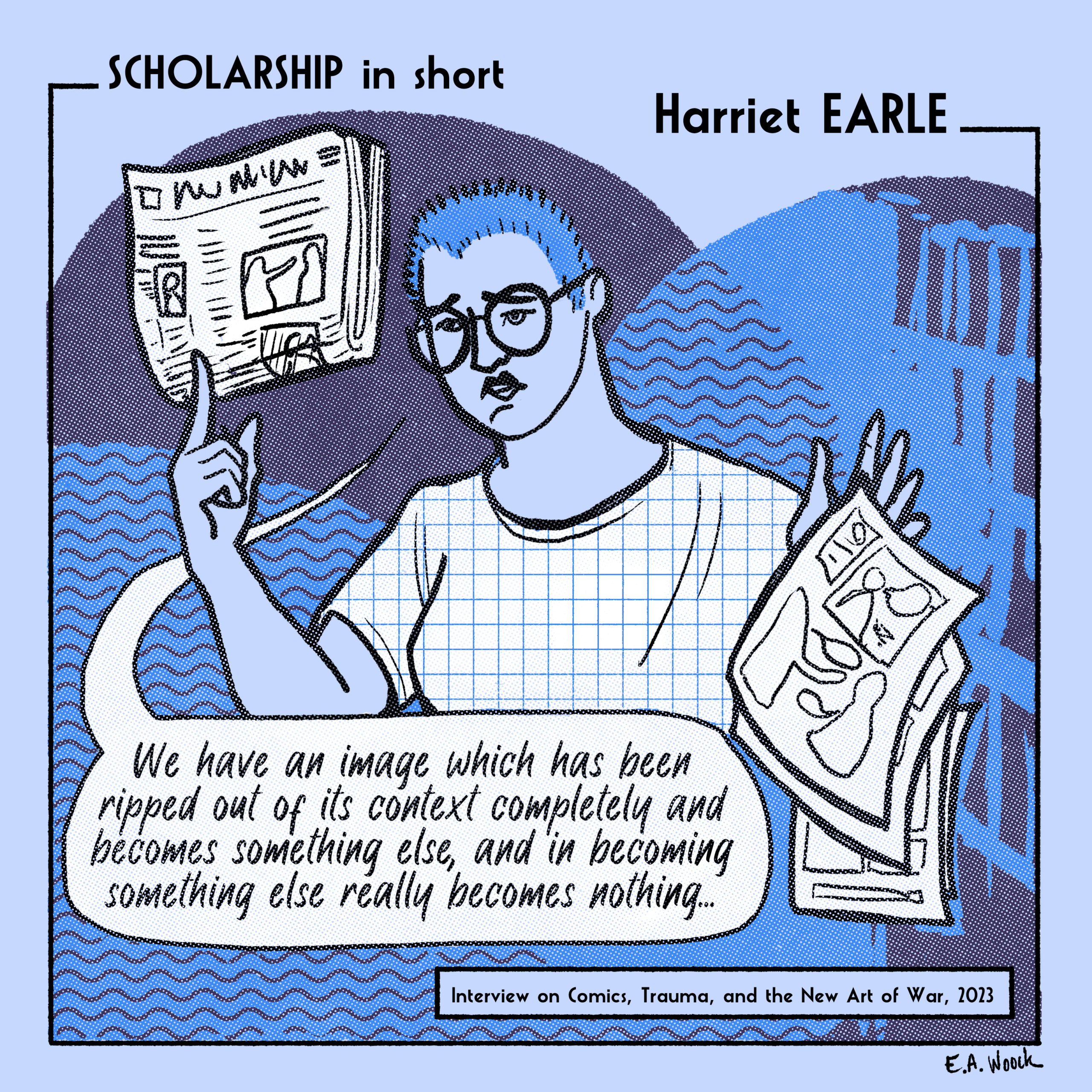
Dr. Earle talks about the challenges of analyzing war comics, the silencing of certain characters in war stories, and graphic proclivities of conflict narratives.
Listen to more
The interview audio is available here at the New Books Network podcast.
What we talked about
Picasso’s Guernica as an example affective recreation of a traumatic event, and how comics as an ‘innovative and forward-thinking medium’ (Earle’s words) “engage the difficulty of spectacle instead of turning away from it” (as Hillary Chute says in Drawing Disaster 2016: 17).
How Earle’s thinking on this topic developed since she wrote the book, and which concepts has she held onto, modified, or discarded.
What she sees in current conversations about war in comics as popular media, and how would she like to see the conversation evolve.
What the biggest challenges of working with this type of corpus are, and the toll it may take on the researcher.
How Earle works with ‘graphic content’ in both sense of the word: at in-person presentations I have seen how she uses facial expressions, body language, and stage presence to discuss this difficult material with respect and honesty, and in these moments is very much addressing the audience on a human level, departing from the formal presenter’s tone. So, I asked how she translates this in communicating in written format.
About the scholar
Dr Harriet Earle is a senior lecturer in English at Sheffield Hallam University and a Research Fellow at the Centre for War, Atrocity, and Genocide at the University of Nipissing. She is the author of Comics, Trauma, and the New Art of War and Comics: An Introduction.
About the book
Abstract: Conflict is one of the most prevalent themes in comics, film and literature; we have been writing stories of war and violence since time immemorial. Comics is no stranger to such narratives and is writing them in ways that are different from (and complementary to) literature and film. This book brings together two distinct areas of research–trauma studies and comics–to provide a new interpretation of this long-standing central theme. Focusing on representations of conflict and war in post-Vietnam American comics, it claims that the comics form is able to mimic traumatic experience in order to represent the events as accurately and viscerally as possible. The textual focus spans the whole form, placing mainstream superhero comics alongside alternative and art comics. The specific comics fit a narrow set of criteria, all being published after 1975 by American creators, discussed in conversation with critical material from a wide range of thinkers, including Sigmund Freud, Mikhail Bakhtin, and Fredric Jameson, as well as contemporary trauma theory and clinical psychology. This book is structured around six key issues in conflict and traumatic representation, with close analyses of the chosen texts to consider the effectiveness of comics, both formally and thematically, in the areas of mourning, dreams, and personal identity. Comics, Trauma and the New Art of War also consider how timescales, temporality, and postmodernism affect, and are affected by, the dual focus of comics and trauma.
